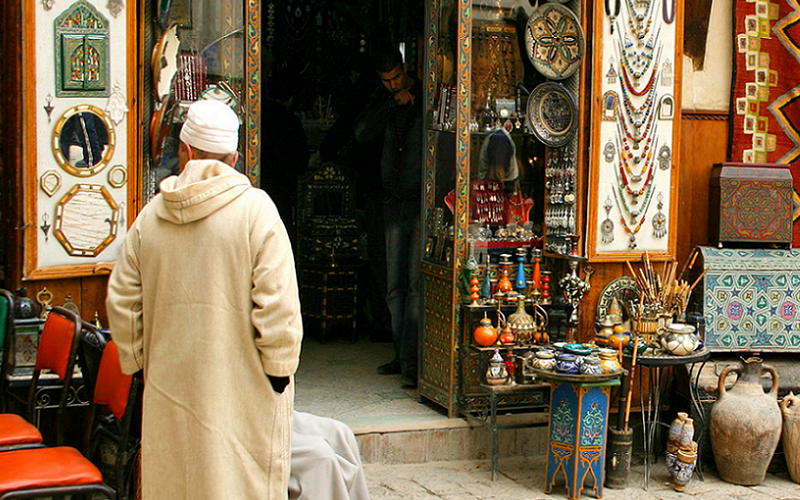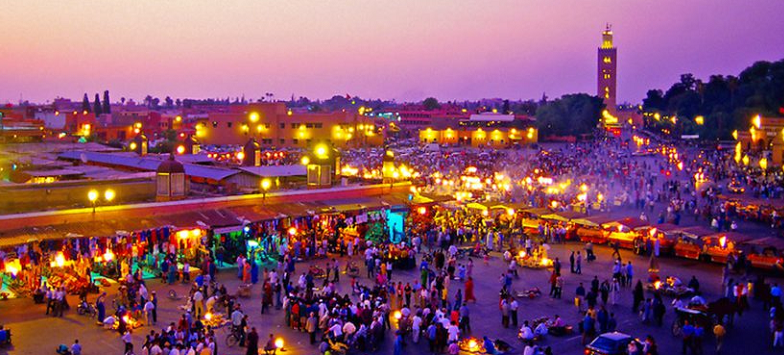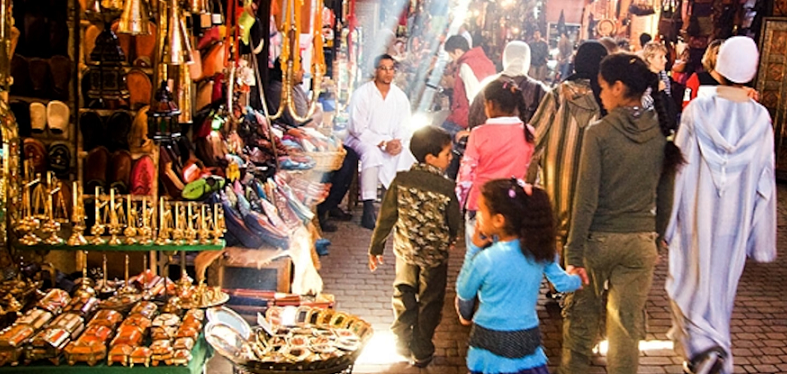
Nestled in the heart of Morocco lies a city bursting with creativity and tradition: Marrakech. Its narrow alleys and bustling squares are alive with the sounds of music, the aroma of spices, and the vibrant colors of traditional arts and crafts. In this article, we’ll take a journey through the art and culture of Marrakech, exploring its museums and galleries, music and dance traditions, and culinary culture.
Overview of Marrakech
Marrakech is a vibrant city in the heart of Morocco, known for its rich history and cultural significance. The city is home to numerous palaces, mosques, and gardens, many of which date back centuries. Marrakech is also famous for its vibrant art and music scene, which draws artists and musicians from all over the world.
The city’s cuisine is another highlight, with an array of spices and flavors that reflect the diverse cultural influences of the region. With its bustling markets, narrow alleys, and ancient architecture, Marrakech is a city that never fails to captivate and inspire its visitors.
Historical and Cultural Significance of Marrakech
Marrakech has a rich history and cultural significance that has made it a hub for arts, culture, and commerce in Morocco for centuries. The city’s strategic location at the crossroads of ancient trade routes has contributed to its cultural diversity and rich heritage.
Marrakech was founded in the 11th century by the Almoravid dynasty and served as the capital of their empire, which spanned across North Africa and Spain. The city was later ruled by various dynasties, including the Saadian and Alawite dynasties, each leaving their own unique mark on Marrakech’s architecture and culture. Marrakech’s medina, or old city, is a UNESCO World Heritage site and home to many historical landmarks, such as the Koutoubia Mosque, Bahia Palace, and the Saadian Tombs.
The city has also been a center for arts and culture, with traditional crafts such as pottery, textiles, and woodworking thriving in the local souks. Marrakech has been a muse to many famous artists and writers, such as Yves Saint Laurent and Paul Bowles, who were drawn to the city’s vibrant culture and exoticism. Today, Marrakech continues to be a hub for art and culture, with an array of museums, galleries, and cultural events that showcase the city’s heritage and creative energy.

Exploring Marrakech’s Art Scene
Marrakech’s art scene is vibrant and diverse, drawing inspiration from the city’s rich cultural heritage and contemporary influences. The city is home to numerous art galleries, museums, and exhibition spaces that showcase a range of local and international artists.
The Museum of Marrakech, housed in a 19th-century palace, is a must-visit for art enthusiasts and features a collection of Moroccan art and artifacts from the 19th and 20th centuries. The Musée Yves Saint Laurent Marrakech, opened in 2017, is dedicated to the famous designer’s work and has become a cultural landmark in the city.
Traditional arts and crafts are also a major part of Marrakech’s art scene, with many local artisans producing pottery, textiles, and woodworking. The souks of Marrakech are a great place to experience the city’s traditional crafts and purchase handmade goods. Islamic art and architecture also play a significant role in Marrakech’s art scene, with intricate tilework, calligraphy, and geometric patterns adorning many of the city’s buildings and landmarks.
Marrakech’s art scene also includes contemporary art and street art, with many local artists experimenting with new mediums and techniques. Overall, Marrakech’s art scene is a vibrant and eclectic mix of traditional and contemporary influences that reflects the city’s rich cultural heritage and artistic spirit.

The Role of Music and Dance in Marrakech’s Culture
Music and dance play a significant role in Marrakech’s culture, with a rich tradition of musical genres and dance forms that have been passed down through generations. Gnawa music, originating from the Gnawa people of sub-Saharan Africa, is a popular genre in Marrakech, characterized by its trance-like rhythms and use of traditional instruments such as the guembri and krakebs.
Traditional Moroccan music, known as Andalusian music, is another popular genre that blends Arabic and Spanish influences and is often accompanied by traditional dance. The city also hosts several music festivals throughout the year, such as the Marrakech International Film Festival and the Festival of Popular Arts, which showcase a range of musical genres and performers.
Dance is also an integral part of Marrakech’s culture, with a variety of traditional dance forms that reflect the city’s diverse cultural influences. The traditional Moroccan dance, known as Raqs Sharqi, is a popular form of dance that combines elements of ballet and belly dancing and is often performed by women. Other popular dance forms in Marrakech include the traditional Berber dance and the Aissa, a lively dance performed at weddings and other celebrations.
Music and dance are an essential part of Marrakech’s culture, with a rich and diverse tradition that continues to thrive today.

Food and Culinary Culture in Marrakech
Food and culinary culture are an integral part of Marrakech’s identity, with a rich and diverse cuisine that reflects the city’s cultural heritage and influences. The city’s cuisine is characterized by its bold flavors, aromatic spices, and the use of fresh ingredients.
Traditional Moroccan dishes such as tagine, couscous, and harira are popular staples in Marrakech, often prepared with a variety of meats, vegetables, and herbs. The city is also known for its street food culture, with an array of food vendors and food markets selling local delicacies such as kefta, merguez, and b’stilla.
The souks of Marrakech are a great place to experience the city’s culinary culture, with an array of spices, herbs, and preserved foods on offer. Tea is a popular beverage in Marrakech, with mint tea being a national favorite and often served as a gesture of hospitality.
The city is also known for its sweet treats, such as the traditional pastries of the Maghreb, including the popular almond-filled pastry, gazelle horns. Overall, Marrakech’s culinary culture is a reflection of the city’s cultural heritage and diverse influences, with a cuisine that is bold, flavorful, and unforgettable.
